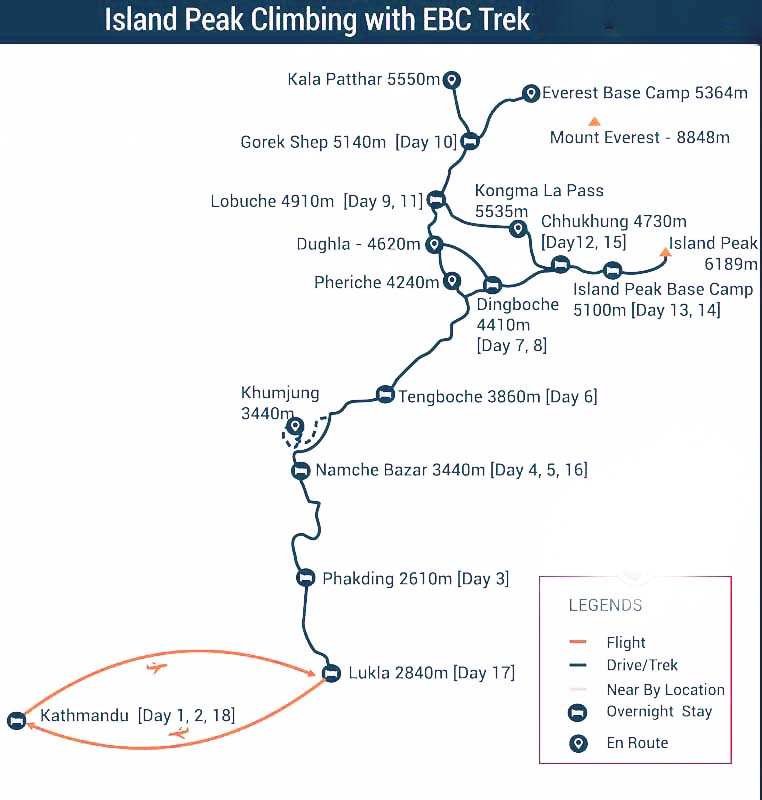Island peak climbing with Everest base camp trek is one of most popular trekking with climbing packages in Nepal. Two in one, this trip is a thrilling experience in the Himalayas of Nepal. Island peak with EBC trek is designed for those energetic and physically fit trekkers who are keen to explore the magnificent Everest base camp and marvelous summit of breathtaking Island peak (Imja Tse).
Island Peak (6,189m/20,305ft) is one of the best trekking peaks in the Everest Region of Nepal with an impressive and highly glaciated West Face that rises from the Lhotse Glacier. Being one of the popular trekking peaks with very little technical aspects, Island Peak is not a difficult undertaking for a beginner climber wishing to enter the incredible world of mountain climbing. Hundreds of climbers flock to Nepal every year to get a permit for Island Peak climbing. Our adventure also takes us into the heartland of the Khumbu Valley and Sherpa culture. Before scaling the peak, we also visit, probably the most charming trekking destination in the world – Everest Base Camp and Kala Patthar – for the up-close views of Mount Everest and other mighty Himalayas.
After an 8 day trek up to Everest base camp and Kala Pattar viewpoint we will descend to Chukkung village where we will meet other members of the climbing crew and preparations for our climb will begin. We will receive final instructions and expedition preparations at Island Peak Base Camp from where the expedition to the summit will be made. The amazing mountain views and unbelievable sense of accomplishment upon reaching the summit will reward us with memories to be cherished for a lifetime. After summiting, we will descend to Island Peak base camp and the rest of the trek follows the same Everest base camp route back to Lukla and Kathmandu via Namche bazaar.
Highlight of EBC with Island Peak Climbing
- Experience a Scenic Mountain Flight from Kathmandu to Lukla
- Explore the foothills of the world’s tallest Mountain: Mount Everest
- Enjoy the breathtaking range of Mount Everest from Kala Patthar
- Explore the world’s highest and fascinating Everest Base Camp
- Summit Island Peak and witness stunning views of the mighty Himalayas (Mount Everest is just in front of you)
- Experience Sherpa village life and visit fascinating monasteries along the trek route
- Trip to EBC and Island Peak Route makes your expedition memorable.
.jpg)

